Persian cats are one of the most popular breeds of cats in the world. They are known for their luxurious fur, stunning appearance, and affectionate personality. However, one question that often arises amongst cat lovers is whether Persian cats shed or not.
The answer to this question is a resounding yes! Persian cats do shed, but the frequency and amount of shedding can vary from cat to cat.
In this blog post, we will explore the topic of Persian cat shedding in depth. We will discuss the shedding frequency of Persian cats and why it is important for potential owners to be aware of this before bringing a Persian cat into their home.
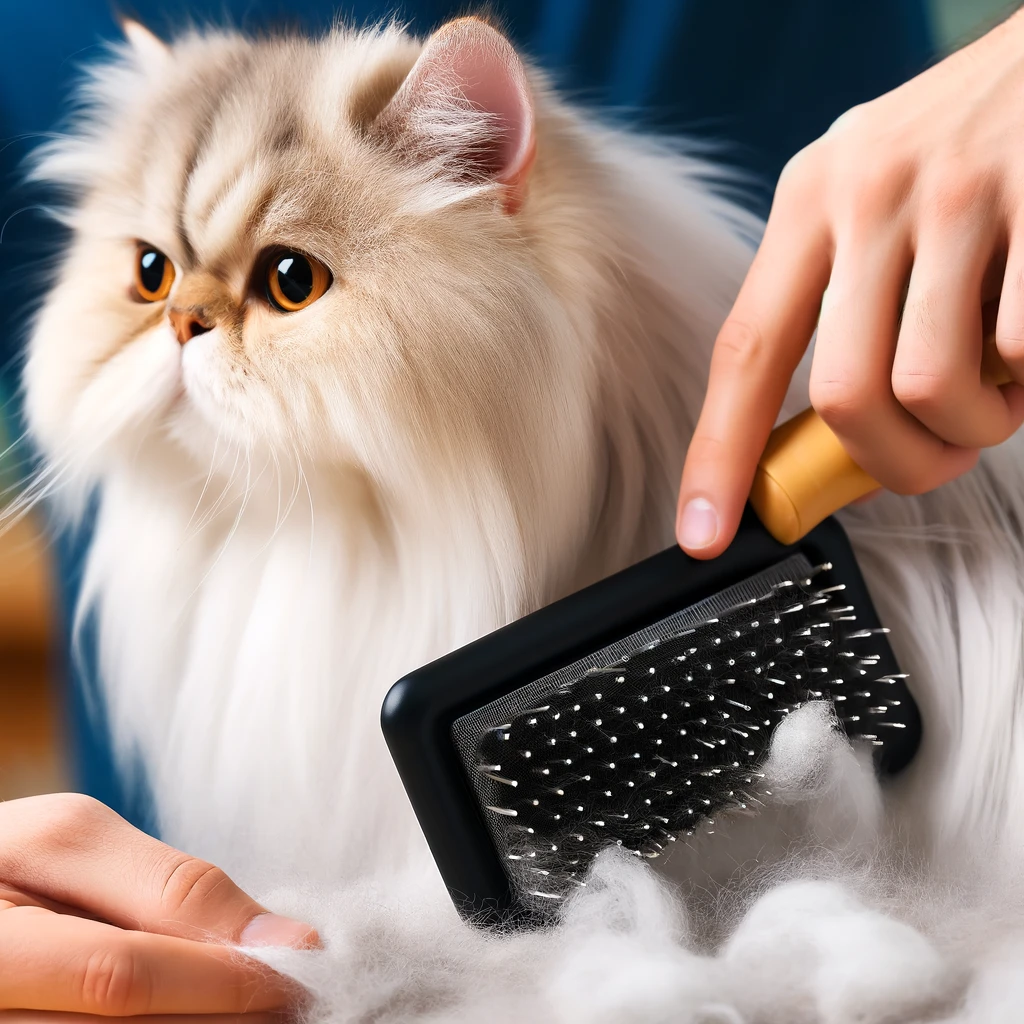
Additionally, we will examine the maintenance requirements that come with owning a Persian cat and how these requirements can impact an owner’s daily routine.
Furthermore, we will delve into the health risks associated with shedding in Persian cats. Shedding can lead to allergies and respiratory problems for both humans and pets alike.
Therefore, it is crucial that owners understand how to manage their cat’s shedding properly in order to prevent any potential health risks.
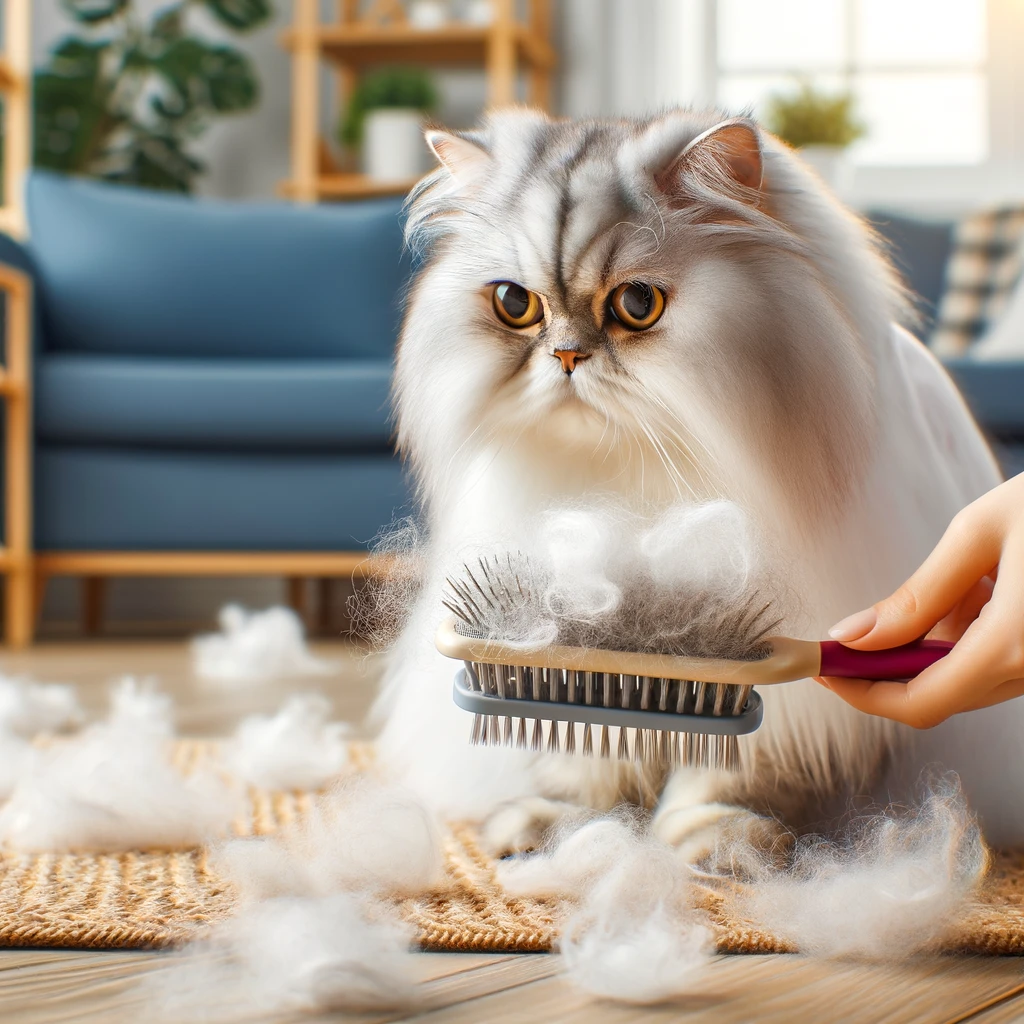
Do Persian cats shed ?
The answer is yes, Persian cats do shed. Persian cats have a thick coat of fur that requires regular grooming to keep it healthy and shiny.
This coat is made up of two layers: an outer layer of long, silky hair and an undercoat of shorter, denser fur. The outer layer is what gives Persian cats their distinctive appearance, but it also makes them prone to shedding.
Persian cats do shed, but the shedding characteristics in Persian cats differ from other breeds. Unlike other cats that have short hair and shed frequently, Persian cats have long hair that grows continuously.
This means that instead of shedding large amounts of fur at once, they tend to lose small amounts of hair throughout the year. This type of shedding is known as “continuous shedding” and can be managed through regular grooming sessions.
The amount of shedding that a Persian cat does can vary depending on the individual cat and the time of year.
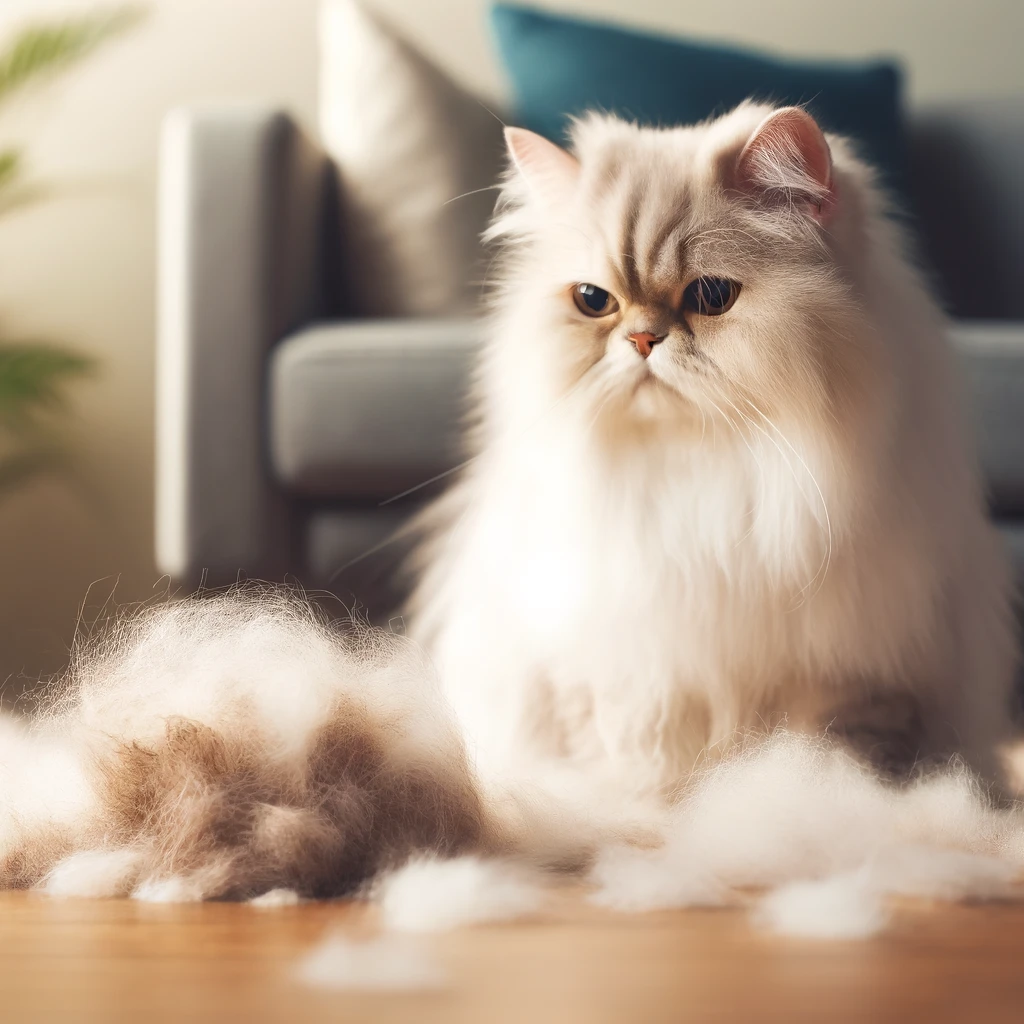
In general, they tend to shed more during the spring and fall when they are transitioning between their winter and summer coats. During these times, you may notice more loose hair around your home or on your clothes.
During the spring months, Persian cats may experience a more significant amount of shedding as they prepare for warmer weather.
This process is known as “blowing coat,” where they shed their old fur to make room for new growth. It’s important to note that this period of increased shedding can last up to six weeks.
If you’re considering getting a Persian cat as a pet, it’s important to understand their grooming needs and be prepared to invest the time and effort required to keep their coat looking its best.
Shedding Frequency:
The shedding frequency varies from cat to cat depending on several factors such as age, diet, health status, and grooming habits.
Shedding is a natural process that occurs in all mammals including cats. It helps to get rid of old and damaged hair and replace it with new growth.
The frequency of shedding in Persian cats can range from moderate to high depending on the individual cat’s genetics and environmental factors.
Generally speaking, younger cats tend to shed less frequently than older ones since their coats are still developing.
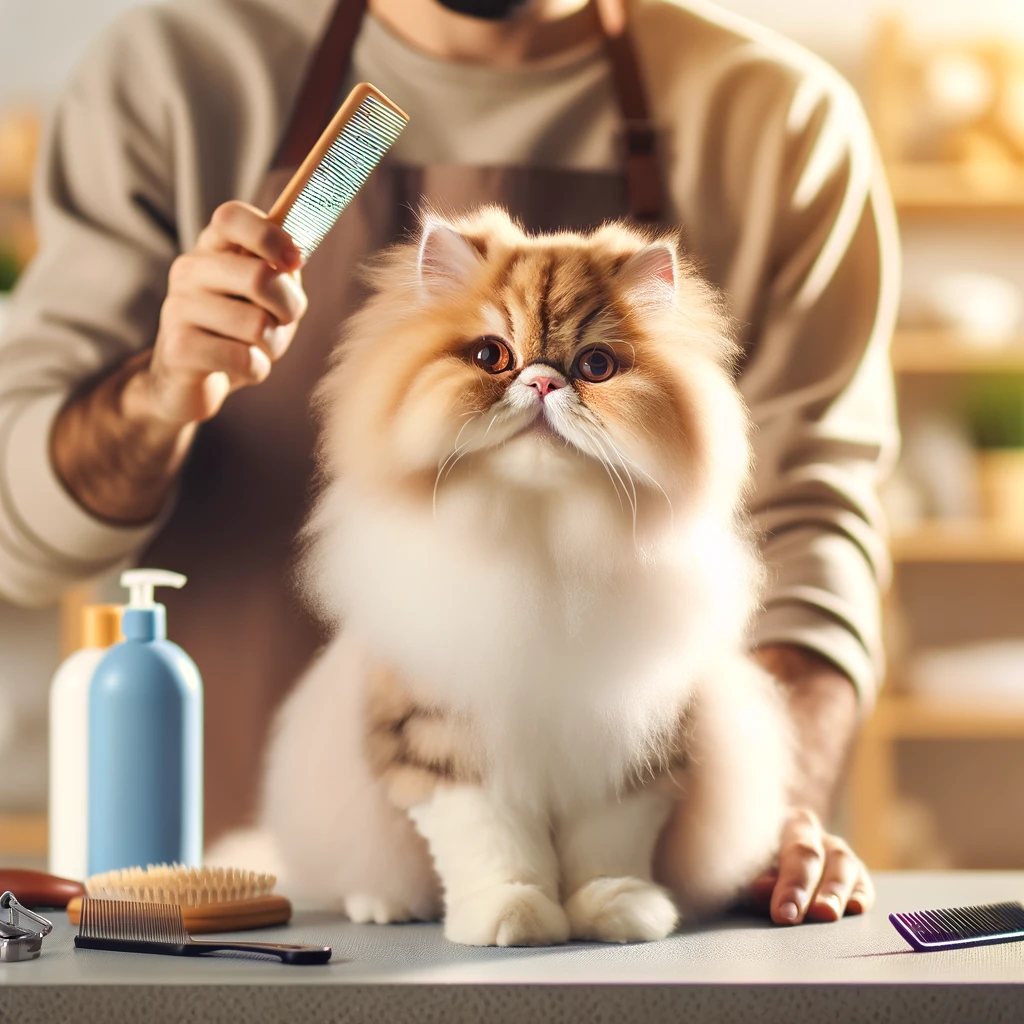
It’s worth noting that certain health conditions can increase the frequency of shedding in Persian cats.
For instance, thyroid problems or allergies may cause excessive hair loss even with regular grooming practices.
If you notice any unusual changes in your cat’s coat such as bald patches or increased shedding beyond normal levels, it’s crucial to consult with your veterinarian for proper diagnosis and treatment.
| Reason | Explanation |
|---|---|
| Seasonal Changes 🌸🍂 | Shed more during seasonal transitions, adjusting to temperature and daylight changes. |
| Stress 😟 | Routine changes or environmental stress can lead to anxiety and increased shedding. |
| Poor Nutrition 🍲 | Inadequate diet lacking essential nutrients can cause dry skin and excess shedding. |
| Allergies 🤧 | Environmental allergens can cause skin irritation and increase shedding. |
| Skin Conditions 🩹 | Dermatitis or fungal infections weaken hair follicles, leading to excessive shedding. |
| Lack of Grooming 🚿 | Neglecting regular grooming results in matting, discomfort, and increased shedding. |
| Age 👵 | Older cats may shed more due to hormonal and metabolic changes. |
| Genetics 🧬 | Some cats are genetically predisposed to shed more or have thicker coats. |
Reasons why your Persian cat might be shedding excess hair
Here are eight reasons why Persian cats might shed more hair than other breeds.
1. Seasonal changes
Like many animals, Persian cats tend to shed more during seasonal changes. In the spring and fall, when temperatures fluctuate and daylight hours change, cats may experience increased shedding as their bodies adjust to these changes.
This is a natural process that cannot be prevented entirely but can be managed with regular grooming.
2. Stress
Stress can cause excessive shedding in Persian cats. Cats are sensitive creatures that thrive on routine and stability; any disruption to their environment or routine can cause stress and anxiety.
Common sources of stress include moving to a new home, introducing a new pet or family member into the household, or changes in feeding or litter box habits.
3. Poor nutrition
A poor diet can also contribute to excessive shedding in Persian cats. Cats require a balanced diet that provides all of the necessary nutrients for healthy skin and coat growth.
If your cat’s diet lacks essential vitamins and minerals, it may lead to dry skin and brittle fur that sheds easily.
4. Allergies
Allergies are another common cause of excessive shedding in Persian cats. Cats can develop allergies to various environmental factors such as pollen, dust mites, or certain foods; these allergies often manifest themselves through skin irritation and itchiness which leads to increased shedding.
5. Skin conditions
Skin conditions such as dermatitis or fungal infections can also cause excessive shedding in Persian cats by weakening hair follicles and causing them to fall out prematurely.
6. Lack of grooming
Persian cats require regular grooming due to their long coats; failure to groom them regularly will result in matting which causes discomfort leading them scratching themselves excessively resulting in hair loss.
Regular grooming helps to remove loose hair and prevent matting, which can reduce shedding.
7. Age
As Persian cats age, they may experience increased shedding due to changes in their hormones and metabolism.
Older cats may also develop health conditions that affect their skin and coat, leading to excessive shedding.
8. Genetics
Finally, genetics can play a role in the amount of hair that Persian cats shed. Some cats simply have thicker coats than others or are more prone to shedding due to their genetic makeup.
If you notice that your cat is shedding excessively or experiencing other symptoms such as skin irritation or itchiness, it’s important to consult with your veterinarian for proper diagnosis and treatment.
With proper care and attention, you can help your Persian cat maintain a healthy coat while minimizing excess shedding.
Health Risks Associated With Shedding:
1. Allergies
One of the most common health risks associated with shedding in Persian cats is allergies. Shedding can cause dander and hair to accumulate in the air and on surfaces, which can trigger allergic reactions in some people. Symptoms of allergies include sneezing, runny nose, itchy eyes, and skin rashes.
2. Respiratory Problems
Excessive shedding can also lead to respiratory problems in both humans and cats. When hair and dander accumulate in the air, they can be breathed into the lungs, causing irritation and inflammation. This can lead to coughing, wheezing, shortness of breath, and other respiratory symptoms.
3. Skin Irritation
Shedding can also cause skin irritation in Persian cats. When hair falls out or becomes tangled in their coat, it can pull on their skin or create mats that trap moisture and bacteria against their skin. This can lead to itching, redness, inflammation, infections or even hot spots.
4. Hairballs
Another health risk associated with shedding in Persian cats is hairballs. Cats groom themselves by licking their fur which causes them to ingest loose hairs that are then formed into balls inside their digestive tract which they may vomit up later on or become impacted leading to constipation.
5. Parasites
Shedding fur may also attract parasites such as fleas or ticks that thrive on warm environments like carpets or furniture where shed fur accumulates over time if not cleaned regularly enough.
In addition to parasites, shedding can also spread harmful bacteria that may be present on a cat’s skin or fur. This includes bacteria such as staphylococcus aureus (MRSA), which is resistant to many antibiotics and can cause serious infections in both humans and animals.
6.Dental Problems
Shedding can also lead to dental problems in Persian cats. When hair accumulates in their mouth, it can get stuck between their teeth or gums, leading to plaque buildup and tooth decay. This can cause bad breath, gum disease, and other dental problems.
7. Eye Infections
Excessive shedding can also lead to eye infections in Persian cats. When hair falls into their eyes, it can irritate the delicate tissues around the eye and cause inflammation or infection. This can lead to redness, discharge, swelling, and other symptoms.
8. Stress
Finally, shedding can also cause stress for both the cat and its owner. When a cat sheds excessively, it may become anxious or agitated as it may feel uncomfortable with all the loose fur on its coat or if they are constantly being groomed by its owner which could lead them to develop behavioural issues such as aggression or depression.
Techniques To Control Shedding In Persians:
Shedding can lead to allergies and mess around the house. Fortunately, there are several steps you can take to control shedding in Persian cats.
Step 1: Brushing
The first step in controlling shedding in Persian cats is regular brushing. Brushing your cat’s fur daily will help remove loose hair and prevent it from spreading around your home.
Use a soft-bristled brush or comb specifically designed for long-haired cats like Persians. Start at the head and work your way down to the tail, being careful not to pull on any tangles or mats.
Step 2: Bathing
Bathing your Persian cat regularly can also help control shedding by removing excess hair and dirt from their coat. Use a gentle shampoo formulated for cats and make sure to rinse thoroughly to avoid leaving any residue on their skin or fur.
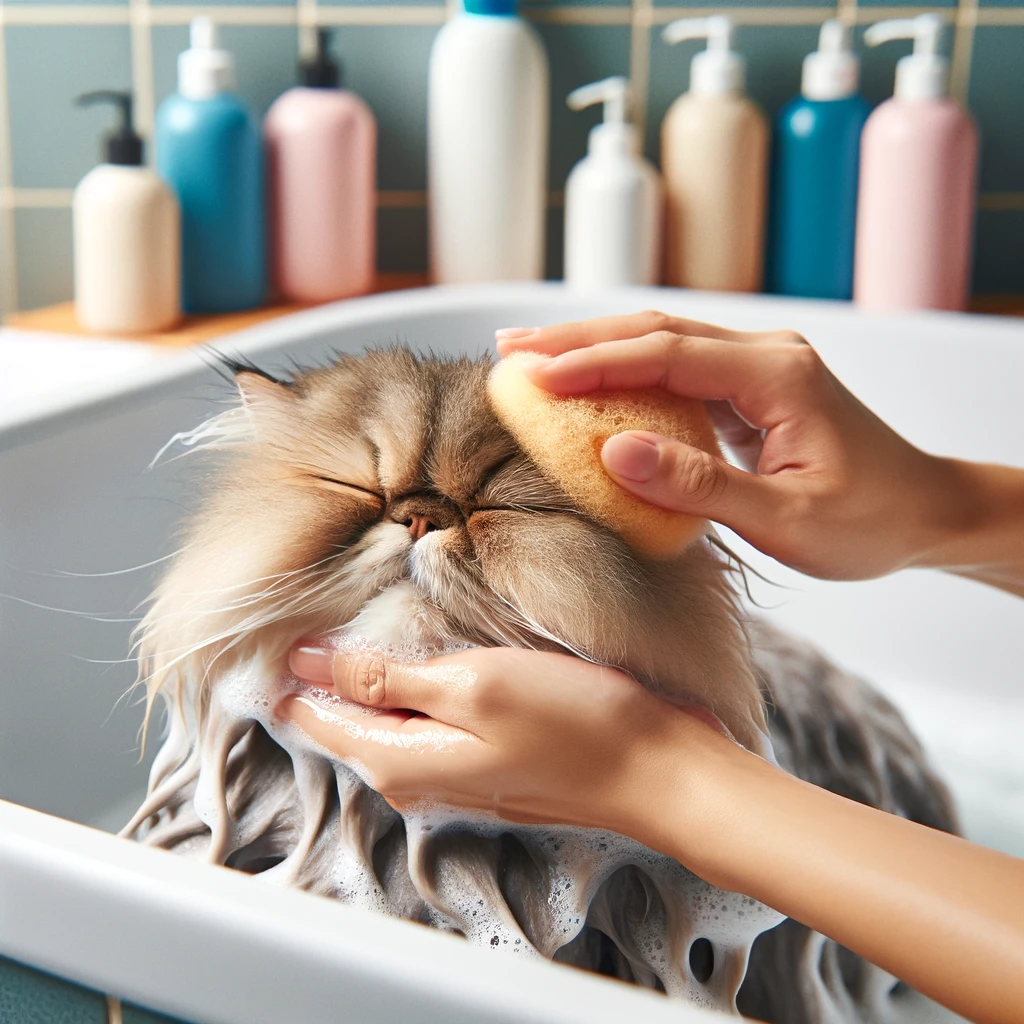
Step 3: Diet
A healthy diet is essential for maintaining healthy skin and coat in Persian cats, which can help reduce shedding. Make sure your cat’s food contains high-quality protein sources like chicken or fish, as well as essential fatty acids like omega-3s that promote healthy skin and coat.

Step 4: Hydration
Proper hydration is also important for preventing excessive shedding in Persian cats. Make sure your cat has access to fresh water at all times and consider adding wet food or broth to their diet if they don’t drink enough water on their own.
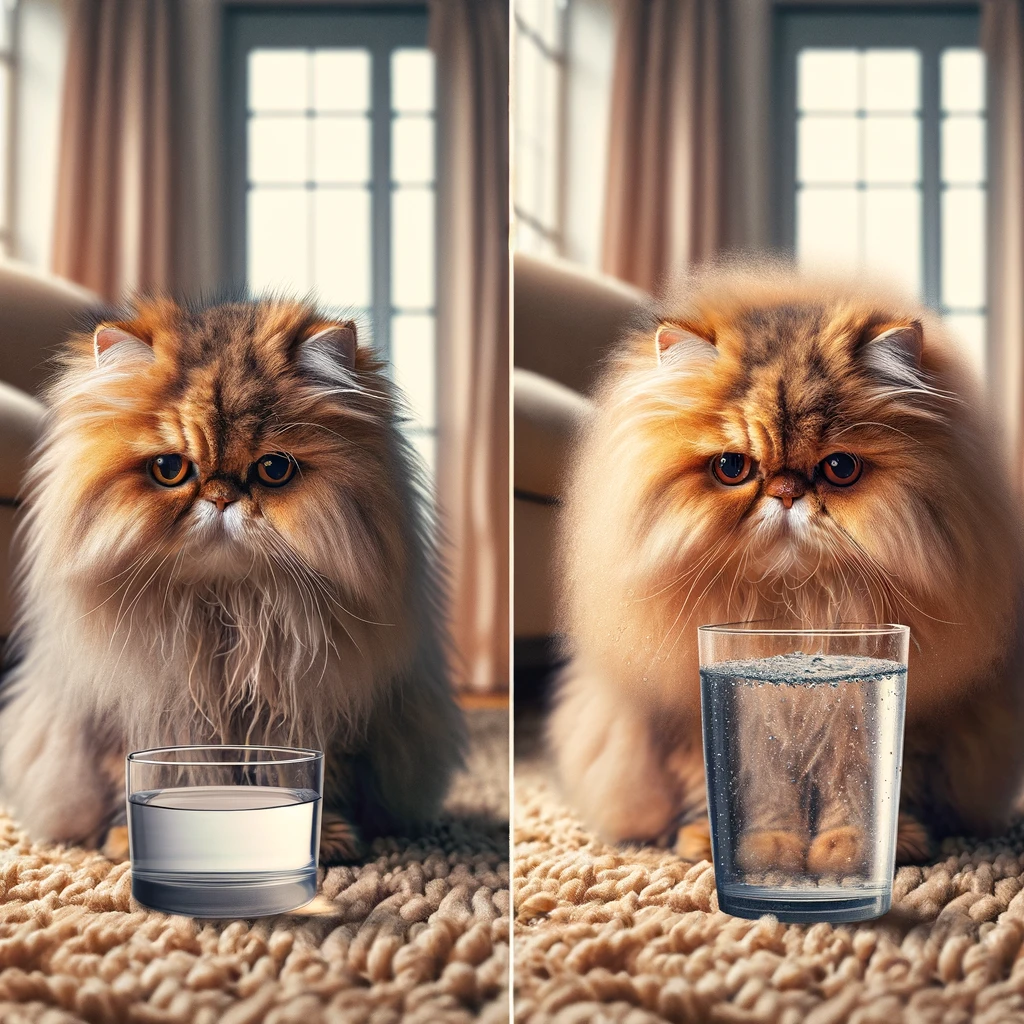
Step 5: Grooming Tools
Investing in high-quality grooming tools can also help control shedding in Persian cats. Look for tools like deshedding combs or slicker brushes designed specifically for long-haired breeds like Persians.
These tools can help remove loose hair and prevent mats or tangles from forming in your cat’s coat.
You can try using a deshedding tool such as a Furminator or ShedMonster. These tools are specifically designed to remove excess fur from cats’ coats without damaging their skin or pulling out healthy hair.
You can use them once or twice a week during heavy shedding seasons like spring and fall.
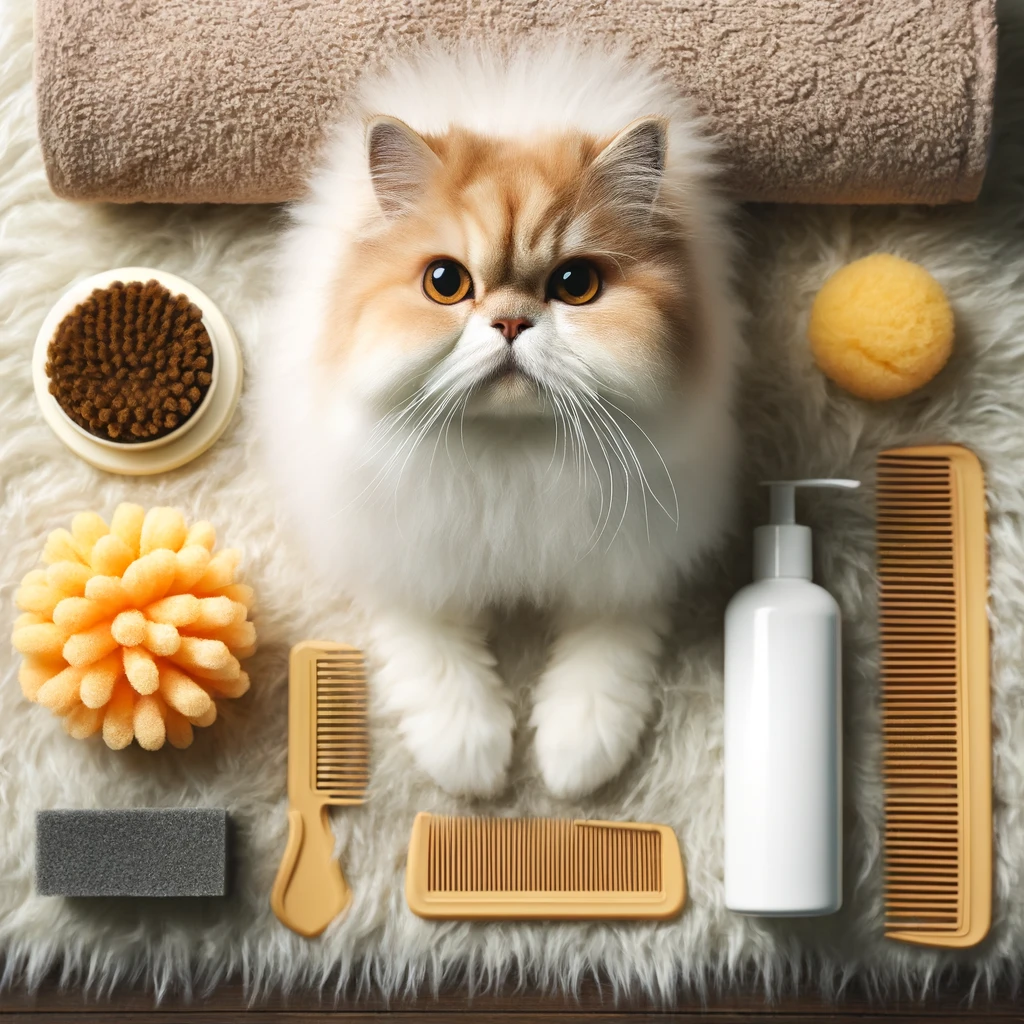
Step 6: Regular Vet Checkups
Regular visits to the vet are important for maintaining your Persian cat’s overall health, including their skin and coat. Your vet can recommend specific grooming products or techniques that may be helpful for controlling shedding in your cat.
Step 7: Manage Stress
Stress can also contribute to excessive shedding in Persian cats. Make sure your cat has a comfortable and safe environment with plenty of opportunities for play and exercise. Consider using calming pheromone sprays or diffusers if your cat is prone to anxiety or stress.
By following these steps, you can help keep your Persian cat’s coat healthy and beautiful while minimizing the amount of hair they shed around your home.
Remember that every cat is unique, so it may take some trial and error to find the best approach for managing shedding in your particular pet. With patience and persistence, however, you can enjoy a happy and healthy life with your beloved Persian companion!
Final Thoughts: Do Persian cats shed?
In conclusion, Persian cats do shed, but the frequency and amount of shedding can vary depending on the individual cat.
While they may not be as high maintenance as some other breeds, regular grooming is still necessary to keep their long fur healthy and prevent matting.
Additionally, shedding can pose health risks such as hairballs and allergies for both the cat and their human companions.
It is important for potential owners to consider these factors before bringing a Persian cat into their home.
Overall, while Persian cats are known for their beauty and affectionate personalities, they do require some extra attention when it comes to grooming and shedding. However, with proper care and attention, they can make wonderful pets for those who are willing to put in the effort.
References:
1. “Persian Cat Breed Information.” American Kennel Club. https://www.akc.org/dog-breeds/persian/
2. “Grooming Your Persian Cat.” The Spruce Pets. https://www.thesprucepets.com/grooming-your-persian-cat-554067
3. “Hairballs in Cats.” Cornell Feline Health Center. https://www.vet.cornell.edu/departments-centers-and-institutes/cornell-feline-health-center/health-information/feline-health-topics/hairballs-cats
4. “Allergies in Cats.” ASPCA Pet Health Insurance. https://www.aspcapetinsurance.com/resources/cat-allergies/
5. “The Importance of Regular Grooming for Your Cat’s Health.” Hill’s Pet Nutrition.
6. “Persian Cat Shedding: How Much Is Normal?” by Dr. Jennifer Coates (https://www.petmd.com/cat/care/persian-cat-shedding-how-much-normal)
7. How to Control Shedding in Persian Cats” by Dr. Karen Becker (https://healthypets.mercola.com/sites/healthypets/archive/2018/06/25/persian-cat-shedding.aspx)
8.”Grooming Your Persian Cat” by The International Cat Association (https://tica.org/phocadownload/grooming-your-persian.pdf)

